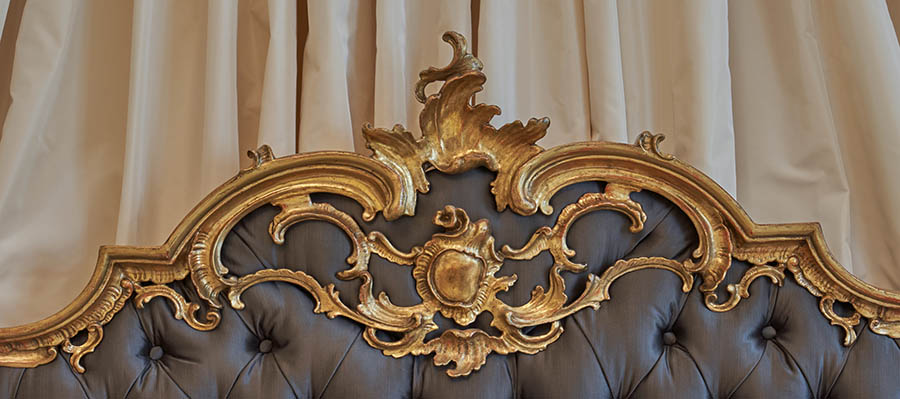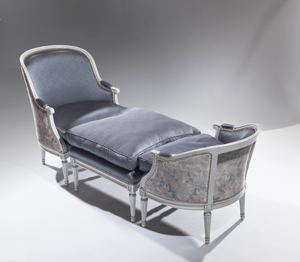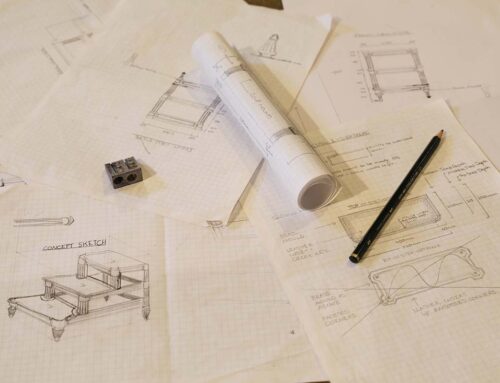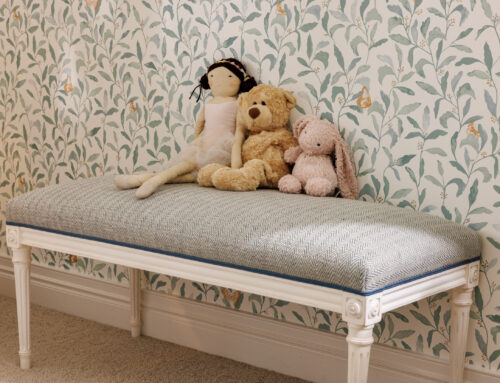8 Beautiful Antique French Beds Transformations –
Explore How Wallrocks Bring Them to Life
Preservation of Antique French Beds:
In a world of factory produced fast furniture, the preservation of such remarkable examples of furniture, namely our collection of 19th century antique French beds, is a testament not only to the quality of restoration possible, but to the craftsmanship and talent of those that made the beds originally, over 150-200 years ago. We have developed an e-book which shows the wonderful journey we take with each client to revive these authentic and high quality antique beds – a visual celebration and demonstration of the meticulous detail, artistry and dedication that defines our restoration process.
At the heart of of our restoration service is a commitment to preserving the integrity of each antique French beds. Our skilled craftsmen have an approach to restoration that dances between tradition and innovation. From regal four poster beds, to intricately carved gilt frames, some of our favourite bed restorations from recent years are featured.
The Antique French Beds Restoration Journey:
 The restoration journey begins with a deep appreciation for the integrity of the original piece, where we carefully assess the bed’s original design and finishes, in order to preserve and enhance what is there. These antique French beds often give themselves away on close inspection, as some symbol depicted in carvings (for example pairs of love-birds often signify the bed was a wedding gift), a particular size of the bed may reveal the status of it original owner, material used may hint at whether the bed came from the city or a country home, and so on…Our team employ traditional techniques, ensuring that every repair and enhancement aligns seamlessly with the bed’s design heritage.
The restoration journey begins with a deep appreciation for the integrity of the original piece, where we carefully assess the bed’s original design and finishes, in order to preserve and enhance what is there. These antique French beds often give themselves away on close inspection, as some symbol depicted in carvings (for example pairs of love-birds often signify the bed was a wedding gift), a particular size of the bed may reveal the status of it original owner, material used may hint at whether the bed came from the city or a country home, and so on…Our team employ traditional techniques, ensuring that every repair and enhancement aligns seamlessly with the bed’s design heritage.
This digital book not only showcases the stunning transformations but also offers a glimpse into the stories behind each bed…well, a glimpse that allows us to offer some educated speculation at least. From 19th century French opulence to the more refined French provincial charm, these restored antique French beds not only serve as functional sleeping quarters but also as tangible and beautiful connections to the past.
In the pages of this book, we invite you to consider the time and skill involved in designing and constructing such beds, not to mention that of our antique restoration team, who nearly two centuries later, are working today to rejuvenate authentic antique furniture, so it can be preserved, loved and enjoyed for generations to come.
Antique French Beds Sizing:
 It has often been noted that French antique beds were made to accommodate small people, and that large beds were not made. Contrary to popular belief, beds were made in varying sizes and many accommodate standard Australian queen and king size mattresses. In fact one bed in the collection is 2.4m wide, over half a metre wider than an Australian standard king. Where possible, and on request only, we can increase the size of original beds to transform a queen into a king, however we do this in consultation with clients and only on particular request.
It has often been noted that French antique beds were made to accommodate small people, and that large beds were not made. Contrary to popular belief, beds were made in varying sizes and many accommodate standard Australian queen and king size mattresses. In fact one bed in the collection is 2.4m wide, over half a metre wider than an Australian standard king. Where possible, and on request only, we can increase the size of original beds to transform a queen into a king, however we do this in consultation with clients and only on particular request.
Through the fabric agencies we work closely with, clients have access to a wide range of some of the most beautiful quality fabrics in the world. We recently had the individual panels of one of our antique French beds hand-embroidered overseas to specifically fit the panels of one of our beds. Each whimsical animal and detail was specifically embroidered and shaped to fit this 19th century French bed, and the result was wonderful.
The beds that remain available in the collection, sit waiting for their new owner, someone with foresight and imagination, to rejuvenate them to their former glory, select a beautiful fabric that transforms it from its past, and gives the bed a new lease on life.
Will that person be you?
The History of Antique French Beds
Beds have been an ever-evolving cornerstone of our domestic lives since the prehistoric era. They are places of mystery and myth. From grass mattresses and water-filled goat skins to opulent four poster, velvet and silk laden works of art, the evolution of the bed is intriguing to say the least. Across cultures throughout the ages, the bed signifies the threshold of many rites of passage and is steeped in custom, superstition and myth.
Ancient Egypt is where beds began to be something more than a mere grass cushion for tired bodies, as societies grew more sophisticated so too did the way they slept. Ancient Greeks used a similar approach to the Egyptians in that, while also opulent, their beds were freely movable. They were used at banquets, combining the enjoyment of eating and sleeping.
The essential shape of a bed has barely changed since its invention, however the frame certainly has taken many forms. The Roman bed was a great symbol of wealth, and new design concepts included features such as turned legs, the addition of a head board and footboard, mattress quality improved and bed linen was enhanced, made from intricately embroided silks.
From the Middle Ages right through to the 18th century, the bed was the most expensive item in a family home. Seen as a mark of social prestige, beds were considered so valuable they were often the first possessions bought by newlyweds, and the most important items bequeathed in wills to heirs. As the middle ages progressed bed designs became more complex and ornate, the textiles more extravagant. Canopies and testers became of utmost importance as they served a dual purpose, one of practicality – offering privacy and protection from cold drafts and to signify status, as the length of the canopy revealed the rank of the occupant.
Louis XVI indulged himself in over 400 extravagant beds, holding court from the royal bedroom, in a reclining position. There are records of dozens of different varieties of French beds used for a range of daily living activities, from beds built into alcoves of rooms, beds enclosed by doors, canopies of a range of shapes and lengths…For the wealthy, it was a time of experimentation and riches, a time to use beds to establish status.
Designers like Chippendale and Sheraton emerged with their elegant, yet practical design concepts like twin beds and single beds. The styles from this era onward through to the nineteenth century typically drew influence from the earlier historical periods and this resemblance can still be seen in contemporary beds today.






